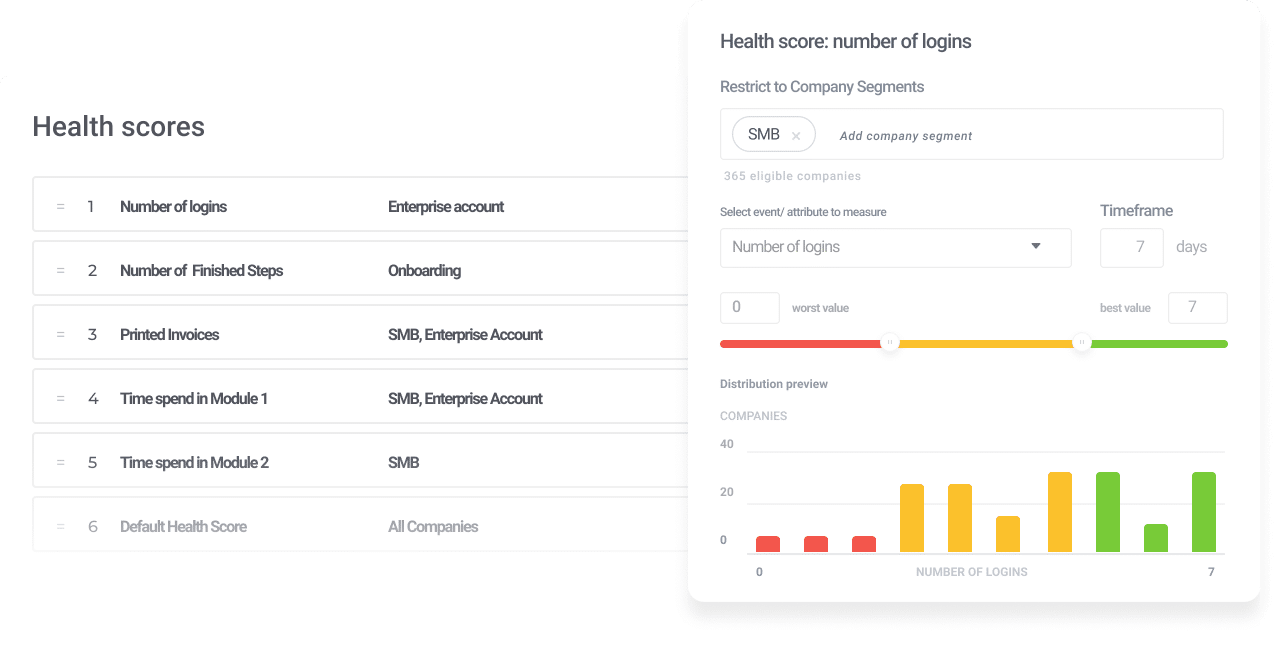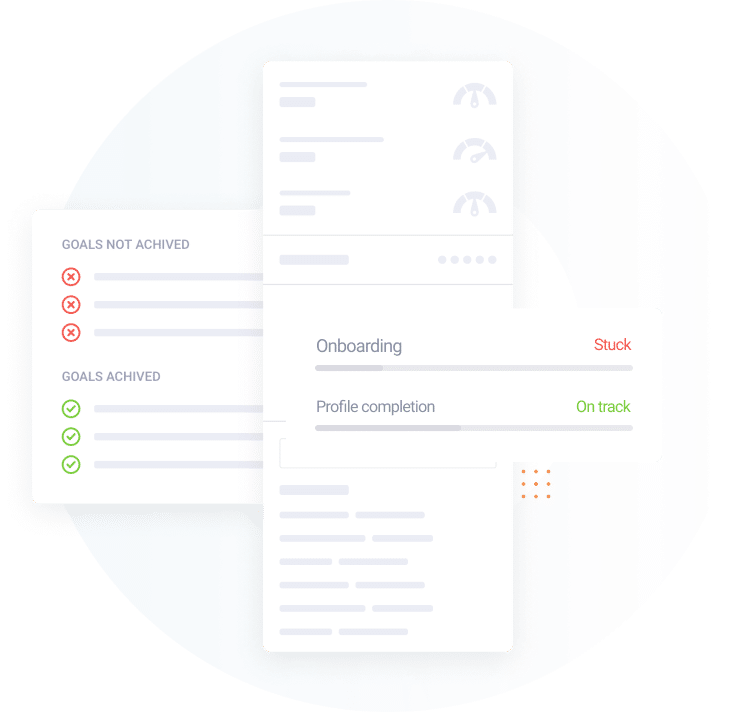This article is part 2 of a series covering how to calculate the ROI of your Customer Success Managers. In part 1, I covered how other CS leaders have dealt with this challenge. Now, I’m sharing how I’ve done it in the past and how you can learn too.
I’ve spent 19+ years working on software and seeing how much companies keep paying to get NEW CLIENTS, without making sure these clients are also SUCCESSFUL – trust me when I tell you that it’s quite a big waste of resources. I’ve since made it my personal mission, and that of Custify, to provide solutions so that customers gain real value from a product.
In the end, it does all come down to value. How much value you’re providing your customers as a business and how much value your employees are providing you. This last part is where the challenge lies.
I’ve stumbled upon this issue many times myself, both in calculating the ROI of my own teams, and while working with Custify customers. To this day, it’s still a challenge, but one that should no longer be ignored.
In this article, I’ll offer a complete guide, with a practical set of tactics and solutions to the challenge of calculating customer success ROI values. I’ll show you how we do it and why I think it works.
Let’s dive in.
How can we measure customer success ROI?
In order to calculate the actual ROI of customer success, I believe it’s important that we understand the status quo and measure its impact on the baseline.
- The “baseline” status represents the measured revenue from the CSMs’ account portfolio, prior to them actually engaging with those customers.
- And the measurable impact is the revenue generated by actively engaging with the accounts the CSMs manage, making sure they onboard successfully, and keeping them interested in further expansions, renewals and cross-sell opportunities.
Remember that quantifying these 2 variables is not that easy, since there are many other hard, measurable CS metrics responsible for the visible growth of your customers.
At first glance, there doesn’t seem to be a designated metric to help us calculate the full customer lifecycle phases outside the baseline status, in order to measure CSMs impact, besides the metrics we generally use.
Here are 2 ways I think we can work around that.
Customer Lifetime Value
A solution to this issue may be looking at customers’ lifecycle to determine the overall customer success ROI. Why, you ask? Well, if a customer’s lifetime increases, while being under the evaluation and management of CS departments, then their profitability also increases.
That’s why I believe we can use the Customer Lifetime Value metric, up to a certain point, to measure the created value of CS departments as a unit. The higher a customer’s lifetime length is, the higher their value and profitability.
Customer Lifetime Value (CLTV) = (ARPA) * (Gross Margin %) / (Revenue Churn Rate %)
ARPA = Average MRR per account.
Do note that both ARPA and Churn Rate need to be either monthly or yearly.
Considering ARPA is the average of all revenue throughout your client base, then Churn Rate is the outcome of all customer interactions and touchpoints. For example, this would include onboarding, support, service delivery, your CRM, and others depending on your business.
If you invest in Customer Success, this will either impact your ARPA or your Churn Rate, depending on whether you focus on retention or expansion.
Efficiency Metrics
In part 1 of this series, I shared 5 important benefits to having efficient Customer Success Managers. Let’s go further into detail, and, more importantly, how I see them being measured.
- Higher customer retention: first, find out your CRC (Customer Retention Cost) and your Churn Rate, then, by comparing the two, you’ll find the values of customer retention to increase over time with a CSM in your team;
- Cross-selling opportunities: your customer success agents should be ready to promote your other products, apart from the Sales team’s efforts – by properly assigning the roles, you can easily find out CSM’s impact, by measuring how many extra services or features has a customer bought through his lifecycle with your brand;
- Lead generation: measuring lead generation rates impacted by your CSMs can be done by taking into account the Click Through Rate (CTR), Conversion Rate and Time to Consumer Rate.
- Positive word-of-mouth: you could measure it by simply asking your new customers how they found your brand / product (works for both self-service via a popup message or in person for high touch);
- Customers become advocates for your brand: when your CS team rocks, retained customers become loyal customers. And they’re almost always brand advocates – so referrals will start to pour in. Then you can begin to evaluate your total referral rates, review numbers, mentions from your customers. You can begin measuring their impact by asking your new customers to tell you how they found out about your products – then analyze the information you get.
Keeping track in time of these metrics delivers a clear calculation of your customer success department ROI as a whole.
But then, at an individual level, how do you measure the value of the managers in charge of CS and of the people you hire?
How can we calculate the ROI of CSMs?
I’ve gone over how I see the challenge of measuring the ROI of your CSMs in part 1 of this article. Here’s a short recap:
- While CSMs add visible value to any SaaS business, their impact is largely intangible.
- There’s a whole range of other factors outside of a CSMs’ control that impact retention rates, on a regular basis, like the global economy situation, competitive landscape changes, and your own product development & improvement.
- Some businesses still find it difficult to assess the exact value and revenue input from customer success programs, as their business grows and evolves.
Now that we’re up to speed, here’s how to get as close as possible to a valid CSM ROI formula.
The logical path would be to begin by assessing the baseline of the CS department before you’ve hired the CSM for whom you’re calculating the ROI.
Then, you’d need to calculate the impact of that CSM after some time (either quarterly or twice a year would be most beneficial).
To attempt to calculate the ROI of an employee, we must first look at 3 key elements:
- The cost of that employee (fully loaded)
- The baseline before you hired that employee
- The impact that the employee has on his leads and customer success KPIs
So a simple equation of calculating the ROI of an employee would be:

How to calculate employee cost
You can start measuring the cost of the employee by taking into account their respective salary, overhead expenses, necessary tools and other fees. It’s a pretty straightforward equation depending on each business case. If you want a quick simplification, you can use the following employee cost formula:

How to calculate the baseline
As I’ve stated before, in the case of a CSM, calculating the baseline is a challenge unto itself. So what’s the solution?
I believe we should follow a mental model to help us assess the pros and cons, as suggested by David Apple. Therefore, it’s no longer a question of finding a formula, but more of an issue you should try to brainstorm with your CS team.
Start with the number of accounts per CSM. You might already have a certain idea of the size of the portfolio of customers a CSM in your team could handle. Try to define a round number of accounts, as close to reality as possible.
Secondly, you need to hypothetically challenge that number. Start by asking spot-on questions, to find out probable results if you raise or decrease the number of accounts your CSMs handle within their portfolios:
1. What if we ADD 50% more accounts to the portfolio?
- What touchpoints in the relationship between CSMs and customers will we remove?
- How will this affect CSMs overall performance? Will it get worse?
- How will the cost-efficiency of the CSMs change?
- How will the impacts the CSMs make change with 50% more accounts added to their portfolio?
2. What if we REMOVE 50% of the accounts from the portfolio?
- What touchpoints will we add to the CSM – customer relationship?
- How will this affect CSMs overall performance? Will it improve?
- Same questions about cost-efficiency and impact arise, in the case of 50% less accounts in their portfolio.
Larger companies might have the means and time to experiment with these ideas hands-on every month. But most SaaS businesses don’t have the scale to do it as easily. I suggest it would be preferable to assess these options either once a business quarter or twice a year.
How to calculate employee impact
The impact that each employee has is usually measured by calculating the revenue generated from the deals they close and their customer success KPIs. But in the case of measuring the impact of a CSM, things get slightly blurry. Let’s get a bit more practical.
- Establish a brainstorming method that works best for your company and your team. Sketch out an overview of your customers’ journeys and your main touchpoints within the customers relationship with your business.
- Then think about the size of the portfolio that each CSM manages and go through the mental model explained above and play with all the variables: add or remove touchpoints, assess the CSMs performance metrics, add or remove engagement strategies, etc.
Basically, you need to aim to be as cost-effective as possible, while not removing the whole impact that you can make on your customers. It’s more a matter of experimenting with your CS strategies until you find a model that works best for your own business and that can bring you quantifiable value in the future.
How to track Customer Success Manager KPIs
Obviously, there are also some pretty common-sense metrics you should take into account as well. You can track them by answering these questions:
– How many calls does each CSM complete in a dedicated amount of time?
Here you should almost always only consider the calls on which they get a positive feedback or even close a deal; calls with no quantifiable impact will be of no help;
– How many tasks do they work on a regular basis?
Sit down with your CSMs and go over their agenda with no bias – try to understand their point of view and their overall customer success process; improvement comes a bit later;
– What is the satisfaction score of their customer touchpoints?
Look at the feedback that customers give after they had a touch point with that certain CSM; ask questions, provide them with forms or even, even simpler, try a rating system like the one we use within Custify:

– What is the overall health score of the portfolio that this CSM is managing?
This is a valuable metric that will help you avoid customer churn in the long run by identifying opportunities and risks early on. By tracking your Customer Health score using Custify, you will be able to:
- see which most or least used features lead to churn;
- figure out patterns in your most valuable user actions, that lead to a more successful customer and higher revenue;
- identify customer success KPIs that you’re not meeting so you can adapt your product to better suit your customers’ needs;

– What is the Lifetime Value and how can you better understand customer’s lifecycle?
Think about the metrics I mentioned above for the overall measurement for that portfolio of this CSM. Specifically, see what the Lifetime Value is for each of their customers.
Try to track your customers’ journeys in order to get an overall view on their progress. Then, define the goals, improvements and proactively reach out. Custify’s Customer 360 feature easily does it all with the help of automation.

The future of customer success ROI & how automated CSM solutions can help
All in all, I have to admit that this is only the beginning. SaaS businesses are in constant evolution and the industry keeps developing. It is a global “work in progress”.
As SaaS business owners, we need to keep an eye out for all landscape changes and to be careful in adjusting management strategies. Calculating customer success ROI may remain a challenge for now, as the CSM role will keep expanding. In the coming years, customer-centric strategies may become more present and bring significant changes to the industry.
One obvious improvement you could already turn to would be to adopt an automated customer success software solution. It brings huge potential of reducing churn rates while driving more sales revenue.
Automated CSM software contains customer success overhead costs and helps you build a scalable infrastructure system in order to maintain the levels of customer success to ensure constant business growth. If you’re ready to take your customer success solution to the next level, feel free to drop us a line or request a demo anytime.
For now, we might not be able to virtually quantify the ROI of CSMs, but we can acknowledge their importance. The mental model might be the best solution we have at the moment. In the meantime, we need to carefully take all variables into account and to continually look for improvements to our business strategies.




